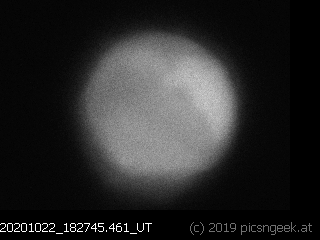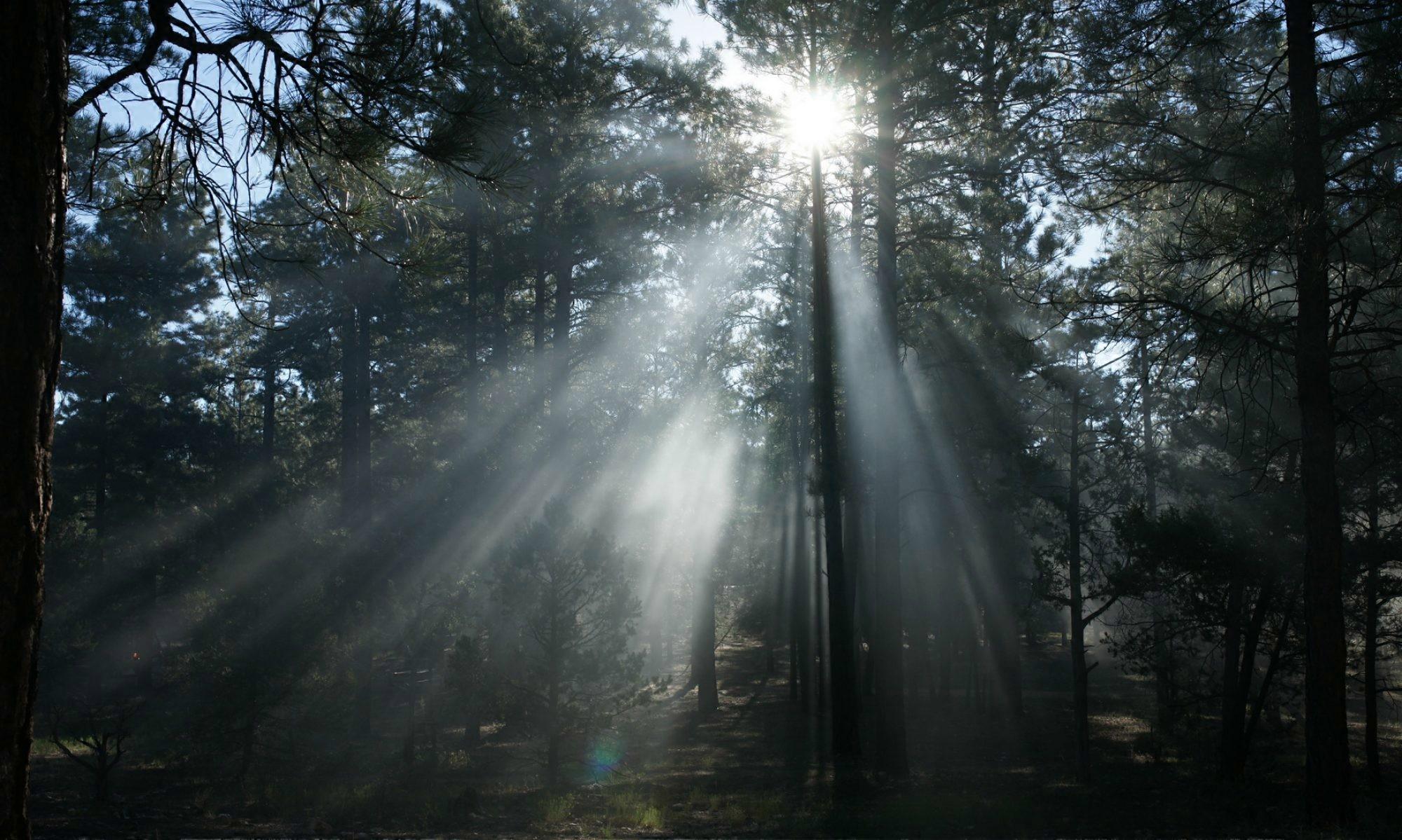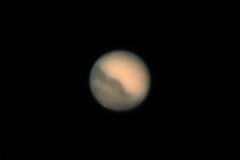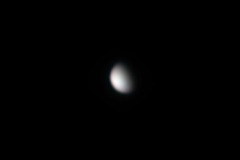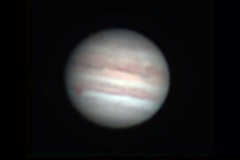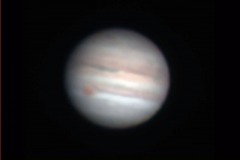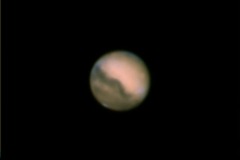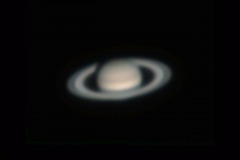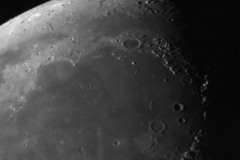On Thursday 2020-10-22 in the evening, I captured image sequences of Mars (see seperate post). During one of the infrared test sequences (I wanted to compare noise levels at +2C vs. -20C) I saw a brief dark shadow passing the disk of Mars. First out, I thought it might have been a bat. But later on, when I analyzed the video, I found out, that the shadow was a satellite transiting Mars 🙂
The transit started at 2020-10-22 18:27:45.498 UT. The satellite left the disk of Mars at 18:27:45.687. So the duration was a very brief 190 Milliseconds! As I recorded with 178 frames/second, I could capture 27 individual images of the transit.
I definitively was very lucky to have registered the shadow during capture time. Otherwise I would never have seen this event in post processing…
Optics used: 10″ f/5 Newton with 2.5x Barlow (effective focal length was 3125mm)
Recorded with IR-650nm pass filter on QHY183M camera at +2C with 178 fps
